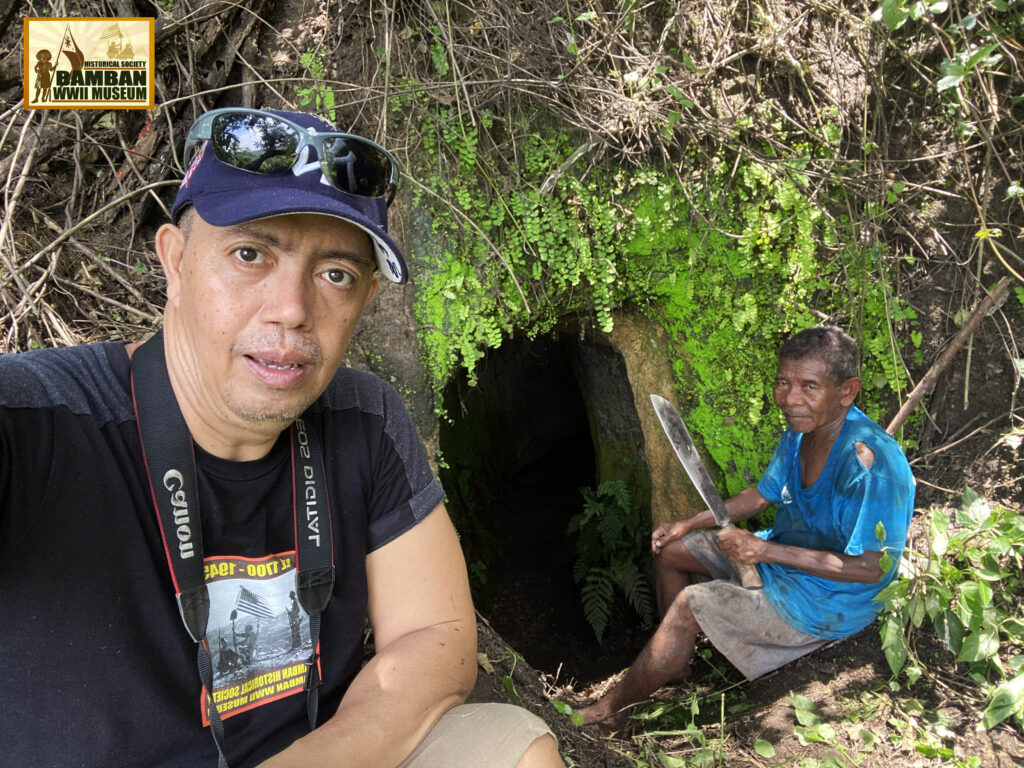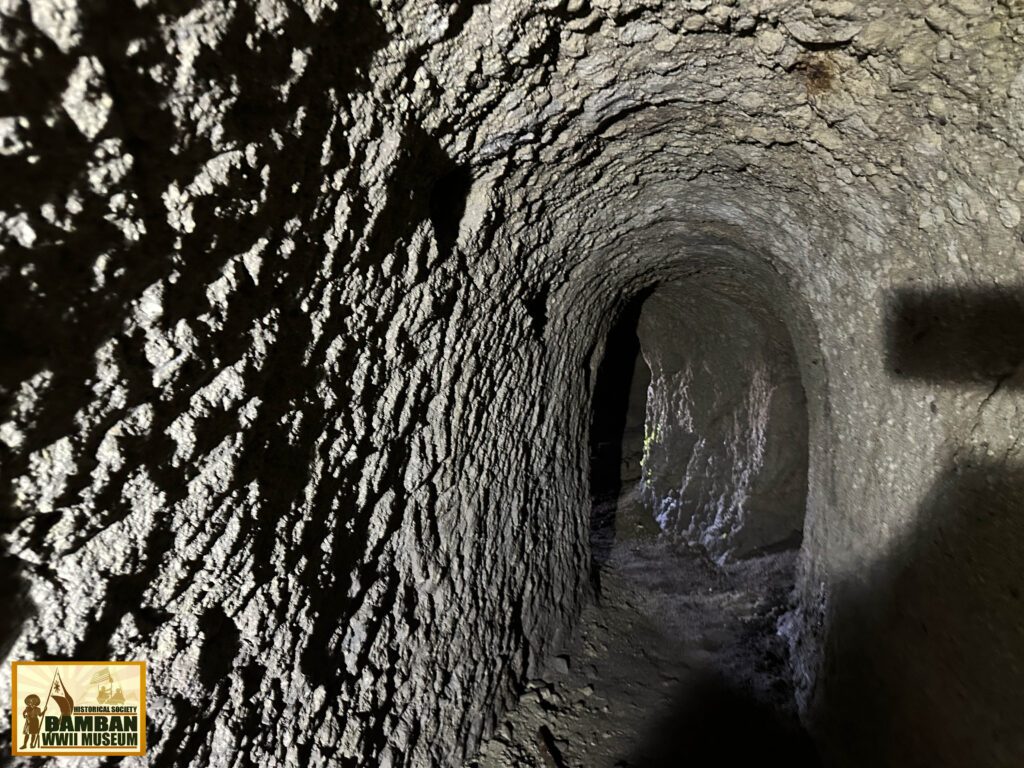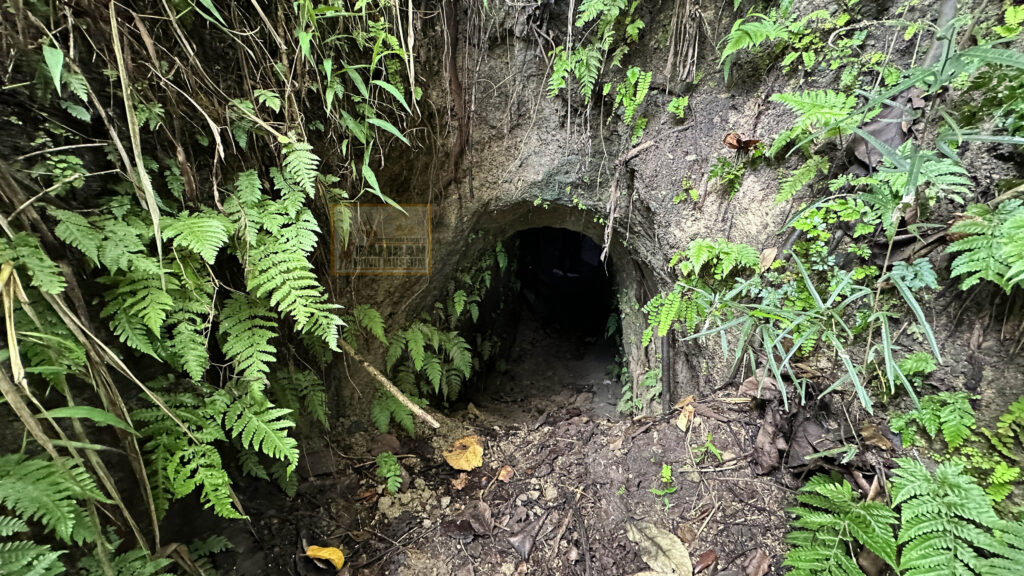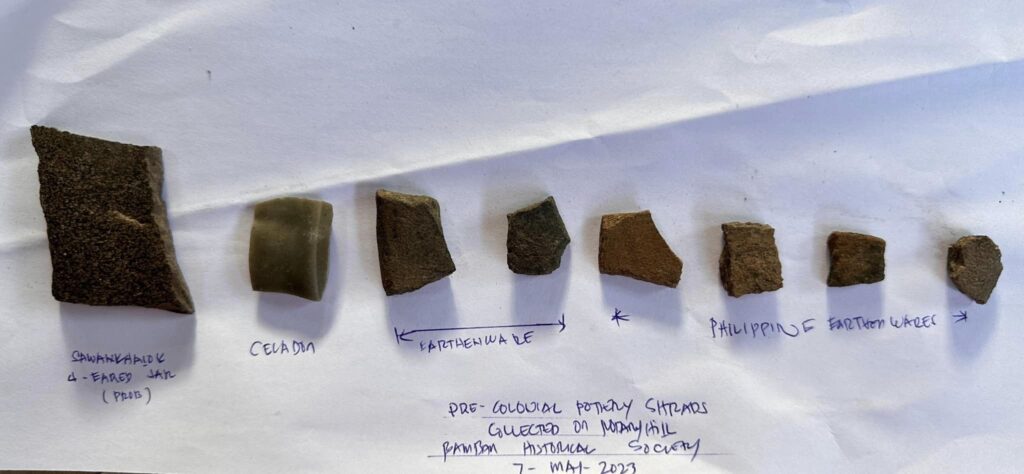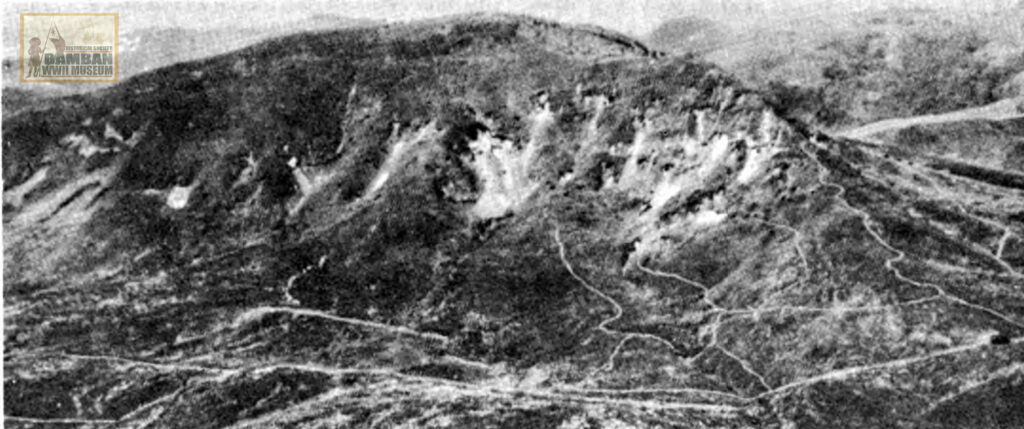
leading to the Japanese tunnels on the east slope. 40th Division U.S. Army photo.
INVESTIGATING HISTORY SERIES
The Remaining of the Japanese WWII Tunnels of Hakozaki-Yama
箱崎山の日本海軍トンネル
The Kembu Group Composite Army and Navy Division ケンブグループ陸軍と海軍の複合部隊
In 1945, 80 years ago, the Japanese military around Bamban-Fort Stotsenburg area, on the rugged high ground of Bamban Hills and Zambales Mountains, established the Naval Forces last stand area. From the rugged terrain of Burug, Mataba, Buuk, Lagare, to the high grounds overlooking the Sacobia-Bamban River such as the Calapi, Ulung Tau, Haduan, to General Mountain, more than 20,000 naval personnel, Taiwanese, Filipinos, Koreans and Chinese laborers were deployed for the construction of fortifications mostly tunnels that would challenge the American advance. In all, more than 40,000 Japanese army and navy personnel and combatants were deployed in the area, utilizing tunnel system for the defense of Clark-Bamban Hills in 1945
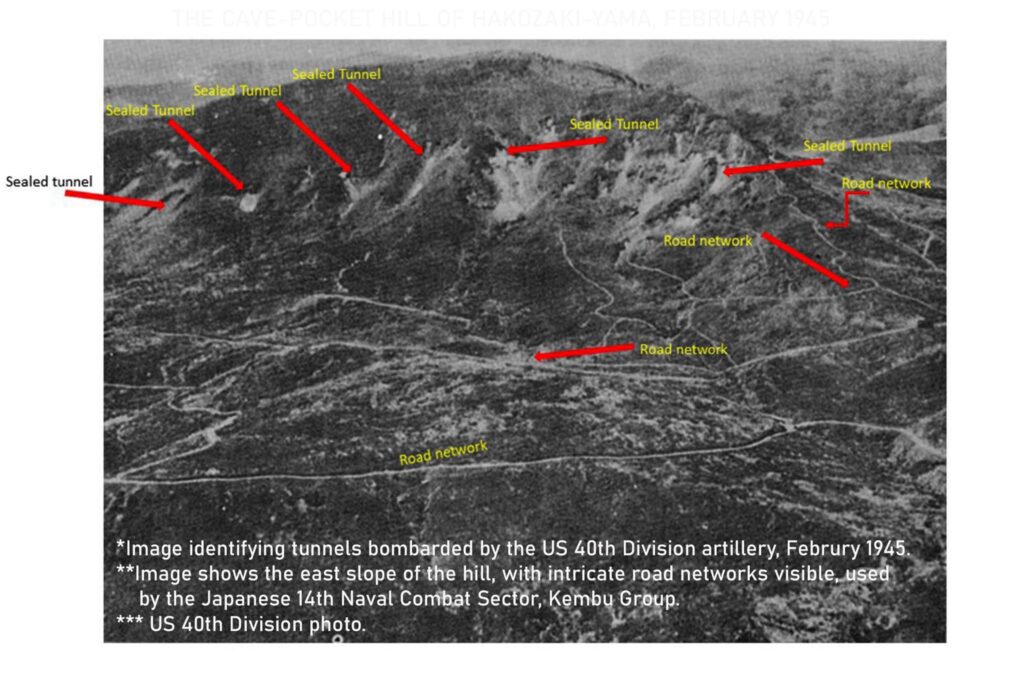
Most of the Japanese naval personnel died in the aftermath of the fighting on these rugged high grounds. A couple of thousands of these Japanese WWII tunnels were constructed, about half of them were at the Naval Last Stand positions.
Remains of the Japanese War Tunnels
日本のトンネルの遺跡
At present, the effects of time, erosion and human activities reduced these WWII historical sites into a mere number, in my experience of exploring them in the region in the past 2 decades, only about 10 to 15 % remain opened, and about half of these are in bad condition, where human activity destroyed part of the tunnels.
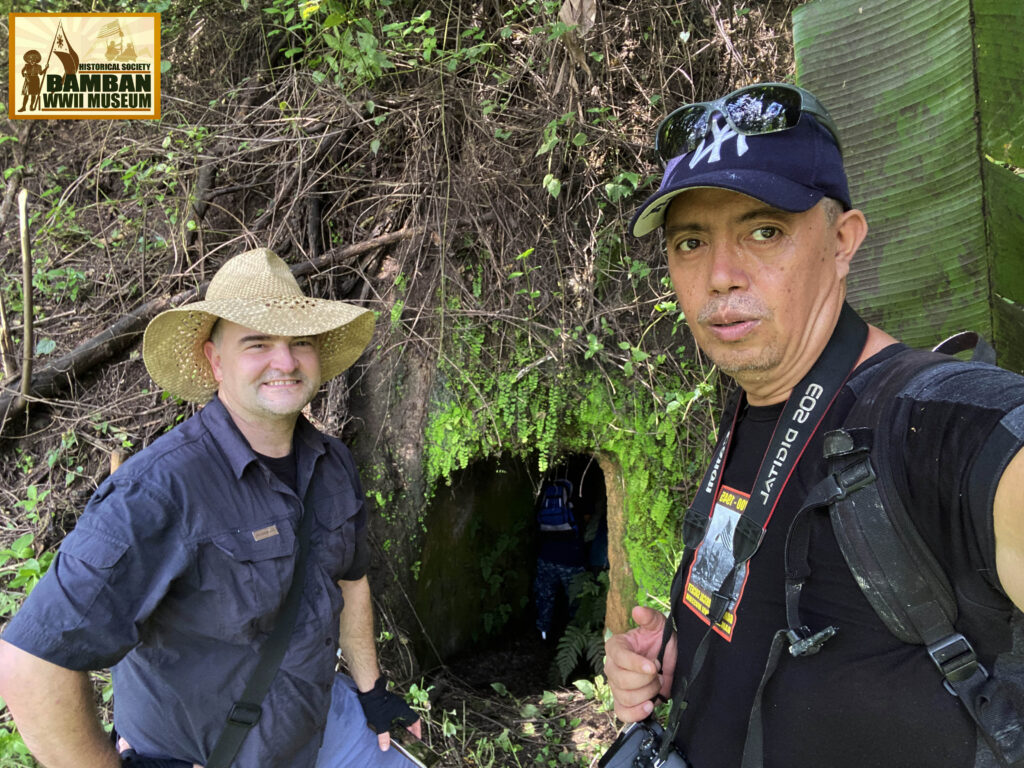
The Hakozaki Mountain
箱崎山とトンネル
At the Hakozaki Mountain, as referred on the Japanese WWII maps, the Aetas called Buok and the Americans during the war named it “Snake Hill North”, only few remains on the east side of the mountain slope, where a photograph taken in February 1945, shows that more than 20 or 30 tunnels were curved by the Japanese for their static defense.
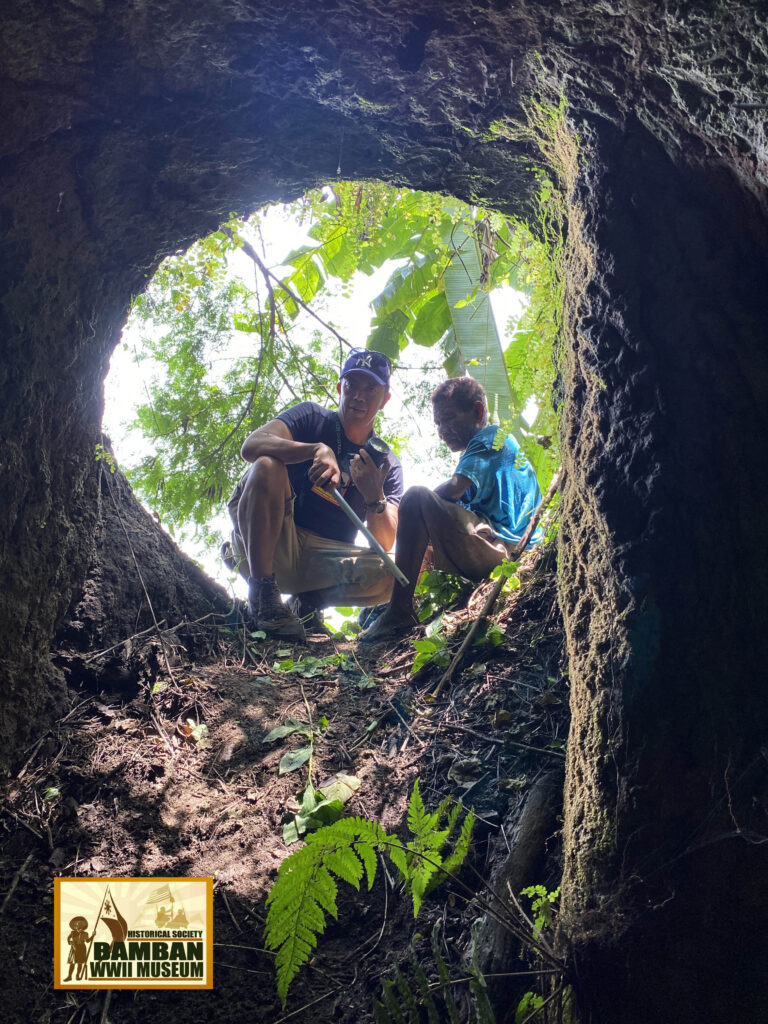
Photos show our reconnaissance and survey of the remaining tunnels of the Hakozaki. Without any intervention, especially from the Government for preservation purposes, these tunnels will be completely destroyed of their original condition and history will be lost forever.
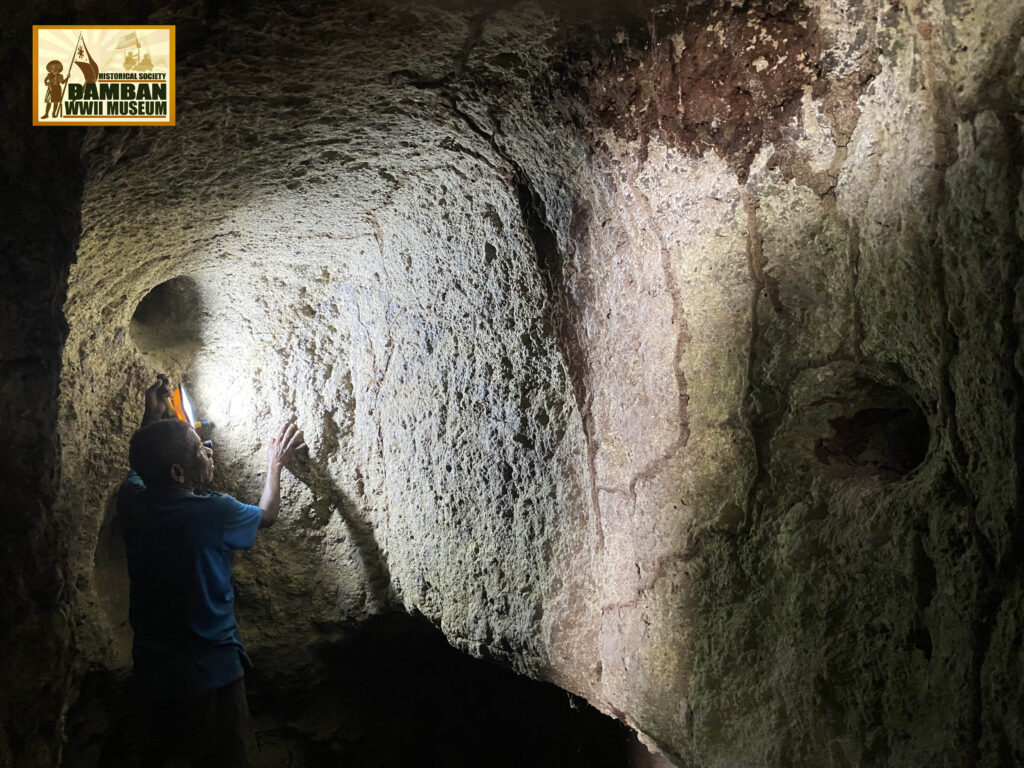
Photographs:
-Snake Hill North (Hakozaki-Yama), showing the intricate mountain trails and dirt roads leading to the Japanese tunnels on the east slope.
-Photos of our field recon and survey undertaken.
